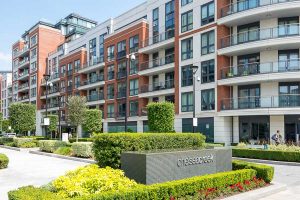 5 Questions to ask before investing in the London property market
5 Questions to ask before investing in the London property market
As the world emerges from the COVID-19 crisis, unpredictable economic conditions are becoming the new reality. Across time, solid investment decisions have tended to gravitate towards property, which, apart from supplying immediate income, tends to provide long-term capital gains as property values rise. In London, the trick is finding the balance between value for money and potential for profit.
Here are 5 questions to consider in the coming months as you prepare to invest in London property.
How is London coping with the COVID-19 fallout?
Through the pandemic, London has lived up to its reputation as a safe haven as it seems the more volatile the world becomes, the more investors are attracted to the property rights and rule of law that form the backbone of the Capital’s economy. The statistics since the easing of lockdown restrictions make interesting reading with leading UK property portal Rightmove, reporting:
- Monthly buyer activity hitting a 10-year high
- Number of homes sold within seven days of going on market – up 125% on last year
- 1 in 7 homes sold within a week
- 15.6% increase in transactions in August
- In September, it rose a further 21.3%
The key fact is that these increases were not driven by a drop in prices which have remained stable, but rather by pent-up demand, as investors waited for the London market to bounce back.
 How does supply/demand affect certain areas?
How does supply/demand affect certain areas?
London remains the major prosperity magnet, drawing in skilled and highly-motivated professional individuals in search of new opportunities. A concentration of world-class universities is also a contributing factor to the demand for high-quality accommodation. The areas close to these workplaces and institutions experience highest demand and prices tend to reflect the limited supply, so the serious investor needs to find properties that offer similar amenities, further from the central districts. Zone 2 is, geographically quite small and financial, media and education professionals will find that Zone 4 properties are more affordably-priced while still being with a reasonable commuting distance or 35-45 minutes. A great boost for such areas is the zero per cent, temporary stamp duty relief that the UK Government has introduced on properties up to £500,000. Lasting until March 21st, this initiative is allowing London’s outer areas to become serious investment propositions.
So for example, University College London(UCL) students seeking a one-bedroom apartment will find little difference between nearby Bloomsbury (Zone 1) and Camden (Zone 2) where median rentals are approximately £1,300 per month. They will, however find Finchley (Zone 3) offers a lower rental at £1,100 pcm and not much difference in terms of commute. Investors will therefore see similar returns for a lower stake if they buy a property in Finchley (average £650,000) rather than Bloomsbury (average £800,000).
How is regeneration affecting the London property market?
UK developers such as Berkeley Group and Barratt London whom we choose to partner with because of the quality of product, are renowned for creating new destinations or “placemaking”. And a well-placed regeneration project can do wonders for an area, providing much-needed infrastructure, connectivity and jobs as well as some outstanding visual upgrades. The attractiveness of these new-build property developments tends to push surrounding house-prices upwards, and because they can be purchased off-plan with plenty of time to prepare finance, there are always opportunities for investors to bag a bargain if they react quickly when an opportunity arises. New builds are particularly attractive to corporate tenants as they offer low maintenance, good on-site facilities, some form of outside space and usually come with parking. For long-term growth, locations which have gone through ‘gentrification’ do provide excellent returns, with good capital growth and stable yields.
 Are there any demographic shifts in your target area?
Are there any demographic shifts in your target area?
There is nothing like a well-planned property revamp for attracting fresh talent and aspiration into a neighbourhood. Locations such as Shoreditch, Docklands, Wapping, Nine Elms and White City all suffered from post-industrialdecline before being transformed into cultural destinations, financial powerhouses, riverside communities and tech hubs. The demographic of these areas has changed as young professionals and wealthy foreign students abandon the long commute from the suburbs, in favour of walk/cycle-to-work, river-taxi convenience.
How well connected is your target area?
London’s not-so-secret weapon is its amazing public transport network which continues to boost further connectivity by way of a series of ambitious expansion projects. None of the regeneration initiatives mentioned here would have been possible without some sort of transport upgrade. The new Elizabeth Line (aka Crossrail)will carry an extra 1.5 million people within an hour from the city centre. House prices along the route are expected to jump accordingly.
International offices















 5 Questions to ask before investing in the London property market
5 Questions to ask before investing in the London property market
 How does supply/demand affect certain areas?
How does supply/demand affect certain areas? Are there any demographic shifts in your target area?
Are there any demographic shifts in your target area?